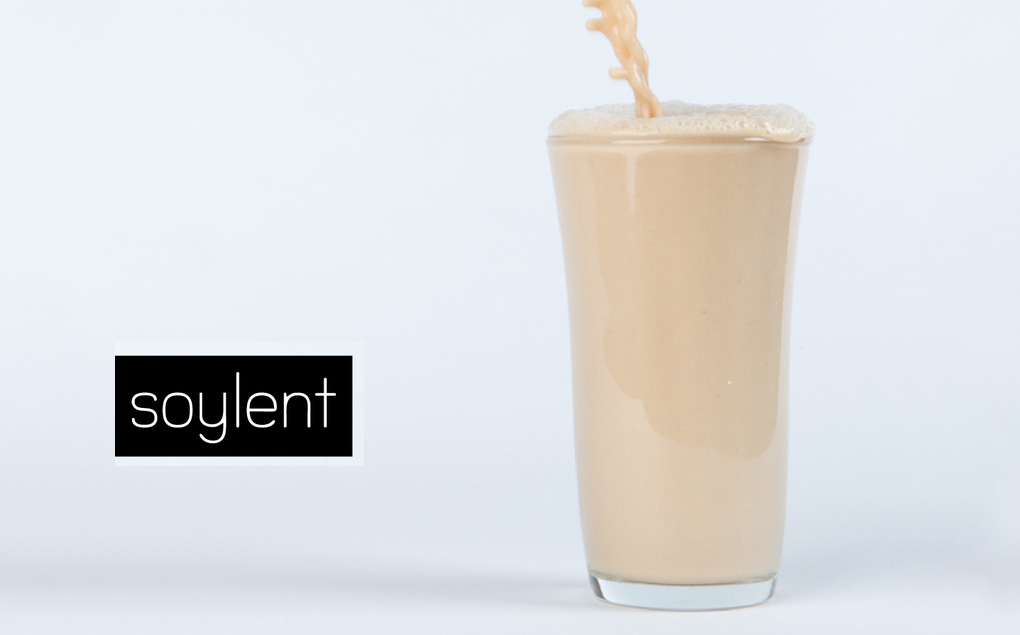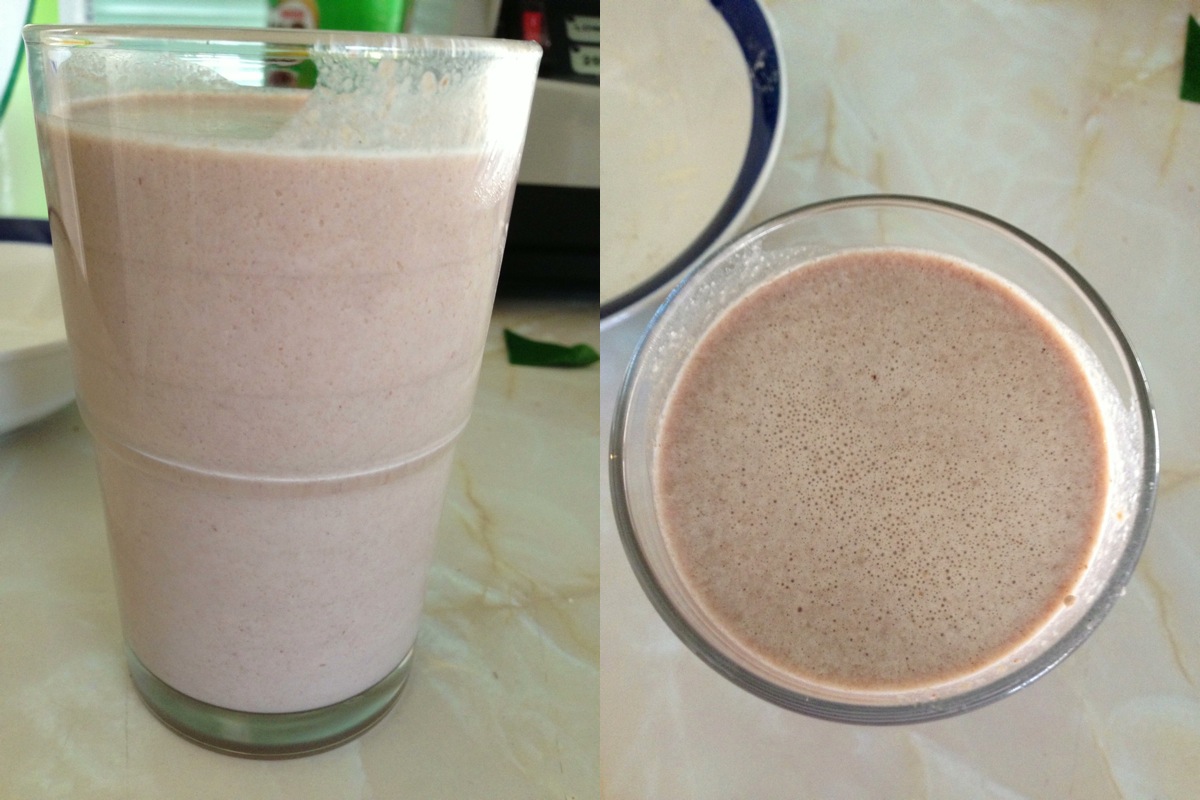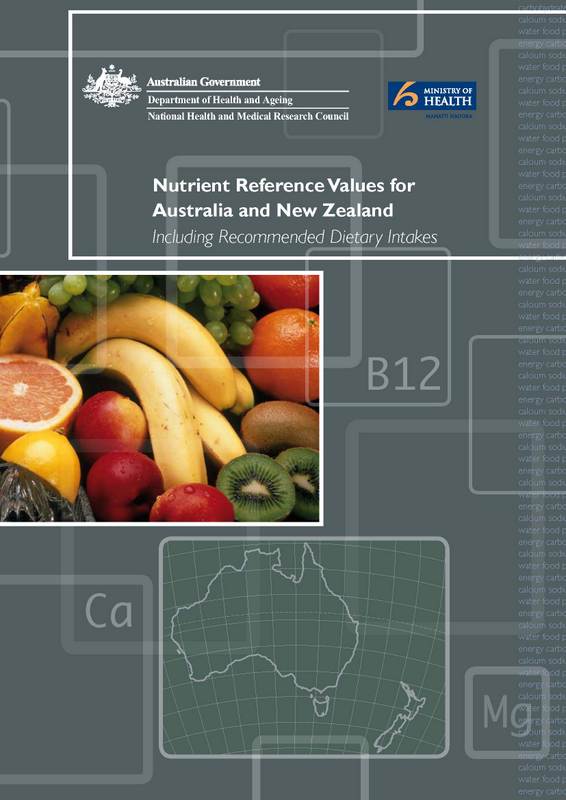
All the energy the body needs. Saves time and money. Contains a Complete set of nutritional requirements. Many times whilst looking into Soylent, I was reminded of ads like this infomercial (and products like it) who may mean well, but really just want to suck money out of vulnerable people’s wallets:
Soylent also gave me flashbacks of people peddling pseudo-sciencey nutritional herb bullshit, the claims of which are well explained by this segment from the Checkout:
Why is this? Because at first glance, Soylent kinda seems like those too good to be true. It looks on the surface just like a “oh they’re selling me a system” type of weight loss or health products. The idea came from a medically and nutritionally untrained computer nerd (who calls himself an entrepreneur, ugh) living in San Francisco (aka hippie central), which –to me at least– raises my bullshit shield immediately.
But after reading Rob’s blog posts, seeing him discuss Soylent in the media and on the Soylent discussion forum, I get the sense that he’s coming at it from a very pragmatic place. It’s also no surprise the idea intrigues me, because I’m also computer nerd, like Rob, and his ideas connect with me more than those of celebrity endorsed, whole food, herbal, life systems. Because of that, I decided to look into Soylent further, as maybe this could (as the infomercials put it): “change your life forever”.
If you haven’t already tuned in to what Soylent is all about, I’ll let the guy that came up with it explain the basic idea:
Rob’s blog posts are what initially got me interested in Soylent (read this post first and work your way forward) and the validity of the concept compounded further, as I’ve always seen that dietary information on the back of food packaging and wondered what would happen if I just ate in order to meet the RDIs. That would be the ideal diet, wouldn’t it? Well Rob had a similar epiphany (maybe he was eating corn flakes and staring at the back of the box too…):
“I hypothesized that the body doesn’t need food itself, merely the chemicals and elements it contains. So, I resolved to embark on an experiment. What if I consumed only the raw ingredients the body uses for energy? Would I be healthier or do we need all the other stuff that’s in traditional food? If it does work, what would it feel like to have a perfectly balanced diet? I just want to be in good health and spend as little time and money on food as possible.”
For three months, he posted his results and experiences consuming only Soylent, with blood tests and other first hand evidence that has shown his health improve significantly. Convinced by this, he invited others to beta test it and subsequently launched a crowdfunding campaign in order to develop his idea into a product that can be manufactured in large quantities. The crowdfunding went well, raising over a million dollars and ending in July 2013. Since the crowdfunding campaign ended, Soylent now consist of a small team, who together with Rob are fine-tuning the recipe and preparing it for large scale manufacture.
Their adventures can be read on the Soylent blog, which is updated weekly. My two favourite posts are the purchase of a Siemens blood analysis machine (so the Soylent team and testers can get bloodwork done quickly) and Rob getting a blood glucose monitor implant, so that his blood sugar levels are monitored 24/7 whilst he has the temporary implant (which is used by insulin dependent diabetics and isn’t as scary as you think when you hear the word “implant” — watch this video of a teenage girl getting one implanted).
The whole process of reducing food to something mechanical and functional is fascinating, and what got me interested in Soylent initially. The concept of giving your body the things it needs, rather than all this superfluous stuff that merely makes the food taste good is something I can subscribe to. Using Soylent as a baseline, go-to food when I am hungry makes a lot of sense. The solidifying moment for me was this blog post, where Rob responds to some of the criticism surrounding Soylent. I won’t repeat what he said (you’re gonna go read it yourself, ok?), but it gave me enough confidence in the concept to keep an eye on it.
Setting the scene

To set up the scene of my situation and interest in Soylent, I should explain my health currently.
- I’m male, 29, 188cm and weigh 157.7kg.
- My blood pressure taken by my partner who is a nurse is normal – averaging approx 125/70 daily over the past week.
- My father has type two diabetes, early stage prostate cancer and ventricular tachycardia (which resulted in a defibrillator implant) and almost everyone on his side of the family who has died, died as a result of diabetes complications.
- According to the DNA screening I’ve had done via 23andme, I’m at above average risk for: Prostate Cancer, Psoriasis, Rheumatoid Arthritis, Chronic Kidney Disease, Esophageal Squamous Cell Carcinoma (ESCC), Stomach Cancer (Gastric Cardia Adenocarcinoma), Primary Biliary Cirrhosis and Scleroderma (Limited Cutaneous Type)
- Blood tests I’ve had done in 2011 and just a few weeks ago in September 2013 show that I have no obvious illnesses or health concerns. You can see the 2013 blood tests below.
Based on that picture of health, the only thing I need to do is lose a lot of weight. If I can get down to around 90-100kg, I’ll probably live a long time without any major health issues, as I’ve rarely had alcohol, smoked or taken drugs (zzzz, what a life). I’ve somehow avoided health complications so far, but that won’t last too much longer as I enter my thirties. Maybe Soylent can help with this. By giving me a strict meal to adhere to I can hopefully get my diet correct, which (together with exercise) will result in weight loss.
The idea of Soylent idea isn’t necessarily new. Products like Herablife, the Terry White Chemists Weight Loss Program, Celebrity Slim and others have been on the market for years. But where Soylent differs is that it is designed to replace food. Weight loss shakes are temporary and if taken long term, for every meal, will do serious damage to your body because there’s either a mix of too much of a certain nutrient, too little energy, or not enough of a nutrient. Soylent is designed to be within RDIs and safe upper limits for nutrients when eaten full time. When manufactured at scale, it will eventually be cheaper than weight loss products too.
In 2005, the Australian National Health and Medical Research Council (NHMRC) released a detailed report on what a human living in Australia needs in their diet in order to be healthy. It’s called “Nutrient Reference Values for Australia and New Zealand Including Recommended Dietary Intakes” and it’s available on the NHMRC’s website, free to download as a PDF. The document explains what each nutrient is, why our body needs it, how much of it we need and how they came to that conclusion. According to the NHMRC, this is what an Australian male, 19-30 years old, 1.8m, 71.kg, who has a physical activity level relating to an office job and no exercise, needs daily:
- Energy – 10.3-11.8MJ
- Protein – 64g
- Linoleic (n-6) – 13g (aka omega-6)
- Linolenic (n-3) – 1.3g (aka omega-3)
- LC n-3 (DHA:EPA:DPA) – 610mg
- Carbohydrate – 45-65% of energy
- Dietary Fibre – 38g
- Water – 2600ml (fluid form)
- Vitamin A – 900μg (max 3,000μg)
- Thiamin – 1.2mg
- Riboflavin – 1.3mg
- Niacin – 16mg (max 35mg)
- Vitamin B6 – 1.3mg (max 50mg)
- Vitamin B12 – 2.4mg
- Folate – 400μg (max 1000μg)
- Pantothenic acid – 6mg
- Biotin – 30μg
- Choline – 550mg (max 3500mg)
- Vitamin C – 45mg
- Vitamin D – 5mg (max 80mg)
- Vitamin E – 10mg (max 300mg)
- Vitamin K – 70μg
- Calcium – 1g (max 2.5g)
- Chromium – 35μg
- Copper – 1.7mg (max 10mg)
- Fluoride – 4mg (max 10mg)
- Iodine – 150μg (max 1100μg)
- Iron – 8mg (max 45mg)
- Magnesium – 400mg (max 350mg via supplements)
- Manganese – 5.5mg
- Molybdenum – 45μg (2000μg)
- Phosphorus – 1g (max 4g)
- Potassium – 3.8mg (supplements should be avoided)
- Selenium – 70μg (max 400μg)
- Sodium – 460-920mg/day (max 1600mg for obese/hypertensive/elderly)
- Zinc – 14mg (max 40mg)
I won’t explain the what & why of these nutrients – the NHMRC document does a brilliant job of detailing it all. All you need to do is ingest all that daily somehow and you’ll have a healthier diet than the vast majority of the western world. To do this traditionally, isn’t impossible, but it isn’t easy. Lots of fruit and vegetables and meat and cooking and preparing, and ugh – not everyone has time for that, or can be bothered. But pouring a bag of powder and some water into a cup, shaking it, then drinking it? Most people can manage that.
DIY Soylent
Soylent is currently still under development and they’re on v0.9 at the moment. It won’t be shipping to the early adopters until some time towards the end of the year and if you order now, you probably won’t get it until early 2014. If you’re in Australia, you can’t order any Soylent and there’s no ETA on when global shipping (besides UK, Mexico and Canada) will start either. Soylent has given samples to a few people however, with the most interesting articles from Ars Technica and Shane Snow’s trial, on Tim Ferris’ blog. So if you want hands on commentary on pre-release Soylent, they’re your guys.
This leaves us with two options – wait for US stock to be in steady supply some time in 2014 and it shipped over (hello AQIS!), or make your own. I’ve decided to investigate the DIY option.
The concept of making your own soylent (lower case soylent refers to DIY stuff, uppercase Soylent is the stuff made by Rob & co) is simply to concoct something edible that contains all the nutrients you need. It can be a liquid. It can be made from whole foods, or from powders or even made into some sort of butter you put onto bread. Whatever form it takes, it doesn’t matter. As long as it’s nutritionally whole and doesn’t have too much or too little nutrients in it. The good thing about DIY soylent is that you can modify it for what you want out of it nutritionally (low sodium perhaps?) and for flavour.
There’s a community of DIY soylent makers on the Soylent forums. People discuss their recipes, debating what should or shouldn’t be in it, how to adjust taste and texture, finding different sources of nutrients and generally debating soylent vs. “real” food. If you’re interested in making your own soylent, rummaging around there is a good place to start.
Personally, I just want the official Soylent, but until I can get my hands on some of the official stuff, I’ve spent the past few days conjuring up my own recipe, with Australian ingredients available locally. A day’s worth of nutrients comes from these components, which I just chuck into a blender, pour into shaker cups and keep in the fridge:
- 1500ml of lite milk
- 100g Milo
- 100g CSR LoGiCane sugar
- 25g Coconut Flour
- 110g Almond Meal
- 200g Banana
- 0.5g Choline Bitartate
I also take a comprehensive iron free multi-vitamin (for the weirder micro-nutrients like molybdenum, selenium and the like) and a fish oil pill (for EPA & DHA omega-3) in the morning. The full ingredient breakdown is on DIY soylent, a website designed to share soylent recipes. You can check out how my recipe compares to the NHRMC’s recommendations too, which is all meets or exceeds perfectly, besides calcium – there’s a lot of calcium in this mix.
This is what it looks like:

A brown sludge, which is kinda frothy thanks to the blender.
How does it taste? Like a cup of cold Milo with banana in it.
The texture is similar to Milo, but with a bit more grain from the almond meal and coconut flour. Definitely nothing like the reports of chalk or flour in the official Soylent. I don’t necessarily like the drink I’ve blended up – give me a Big Mac any day – but it’s definitely tolerable. If you’ve ever had Up & Go or those other breakfast drink things, this is very very similar. You could probably also add things like honey, or vanilla essence if you’re keen on experimenting with the taste.
As you can see from the ingredients, if you’re allergic to nuts, this will kill you. If you are lactose intolerant, you’re gonna be shitting all over the place. Vegans won’t like the milk. Also, if you’re female, this isn’t going to suit you. If you’re smaller than me (you probably are), this has too many calories. So I don’t recommend copying this recipe unless you’re a stupidly overweight male with no allergies.
Warning: I Could Be Wrong
Maybe because I’m a nerd and Rob’s a nerd, I have some sort of blind faith in him. Similar as to what the stereotype of a middle aged mum who sees a celebrity in an ad for a weight loss product would react to it, or a bloke with big muscles covered in ladies does for middle aged men. Soylent could just be another fad diet that has the right amount of fact (they all have some fact) that sees me lured into it. The creator of the cult is saying the right words to woo me. Whether Soylent in DIY form suits me, remains to be seen and it’s too early to tell from my random two weeks of consumption. I’ll integrate it into my diet and see how it goes. It probably won’t be a miracle, but it might help improve my overall health.
(Be sure to also check out my Soylent FAQ, where I answer all the questions I’ve been asked to date.)
[optin-cat id=5772]